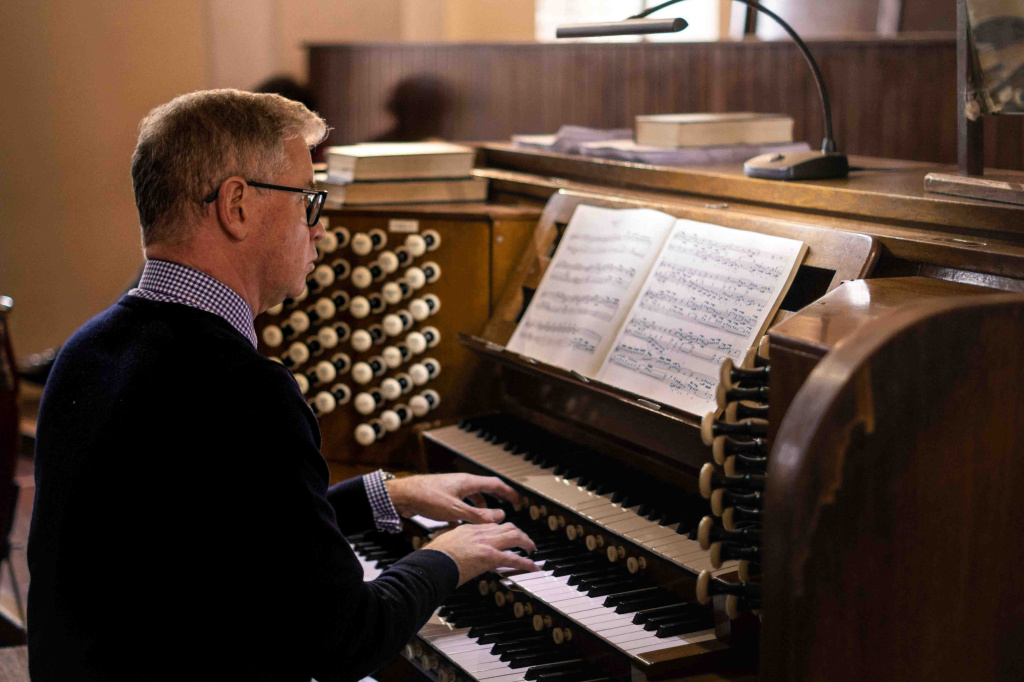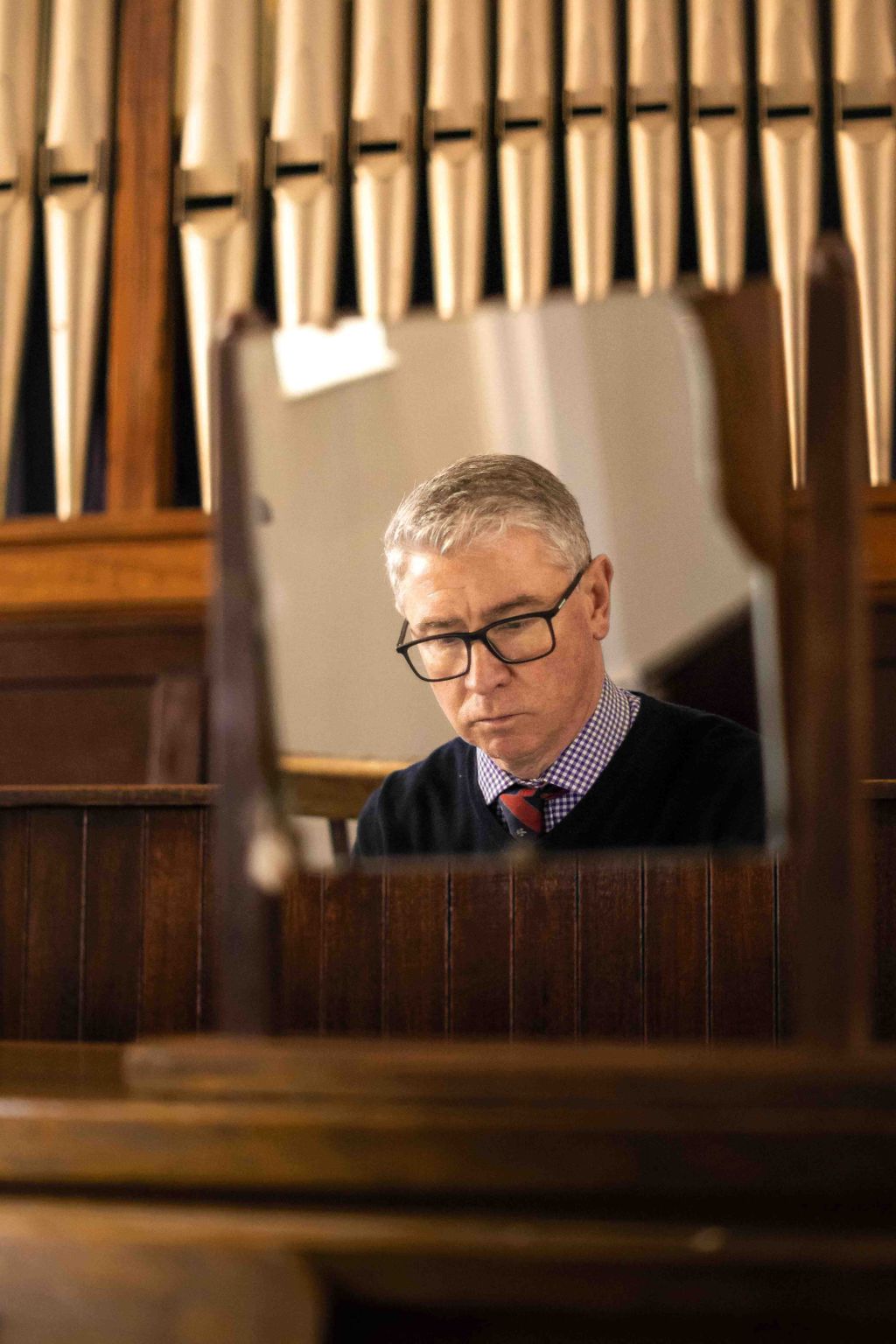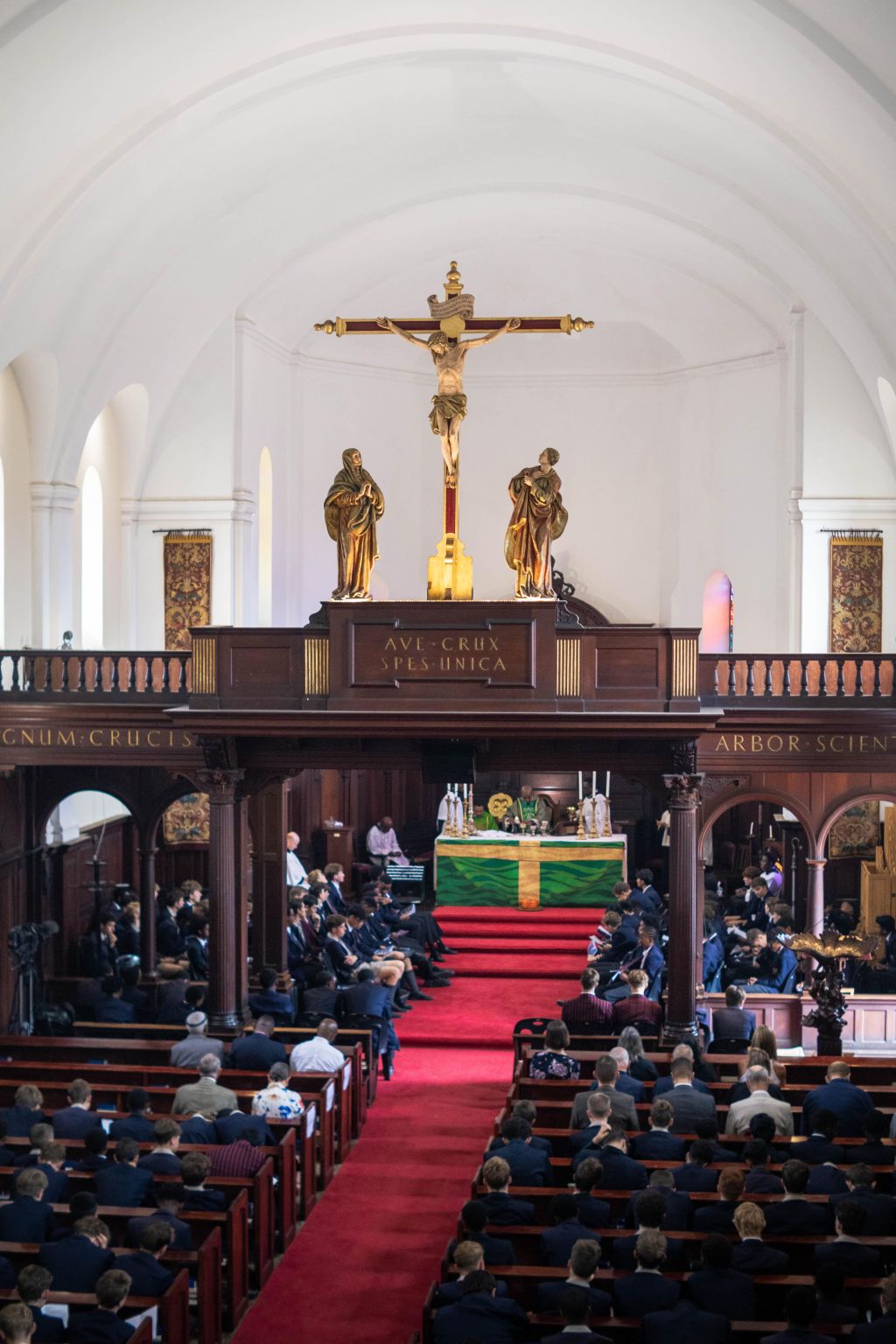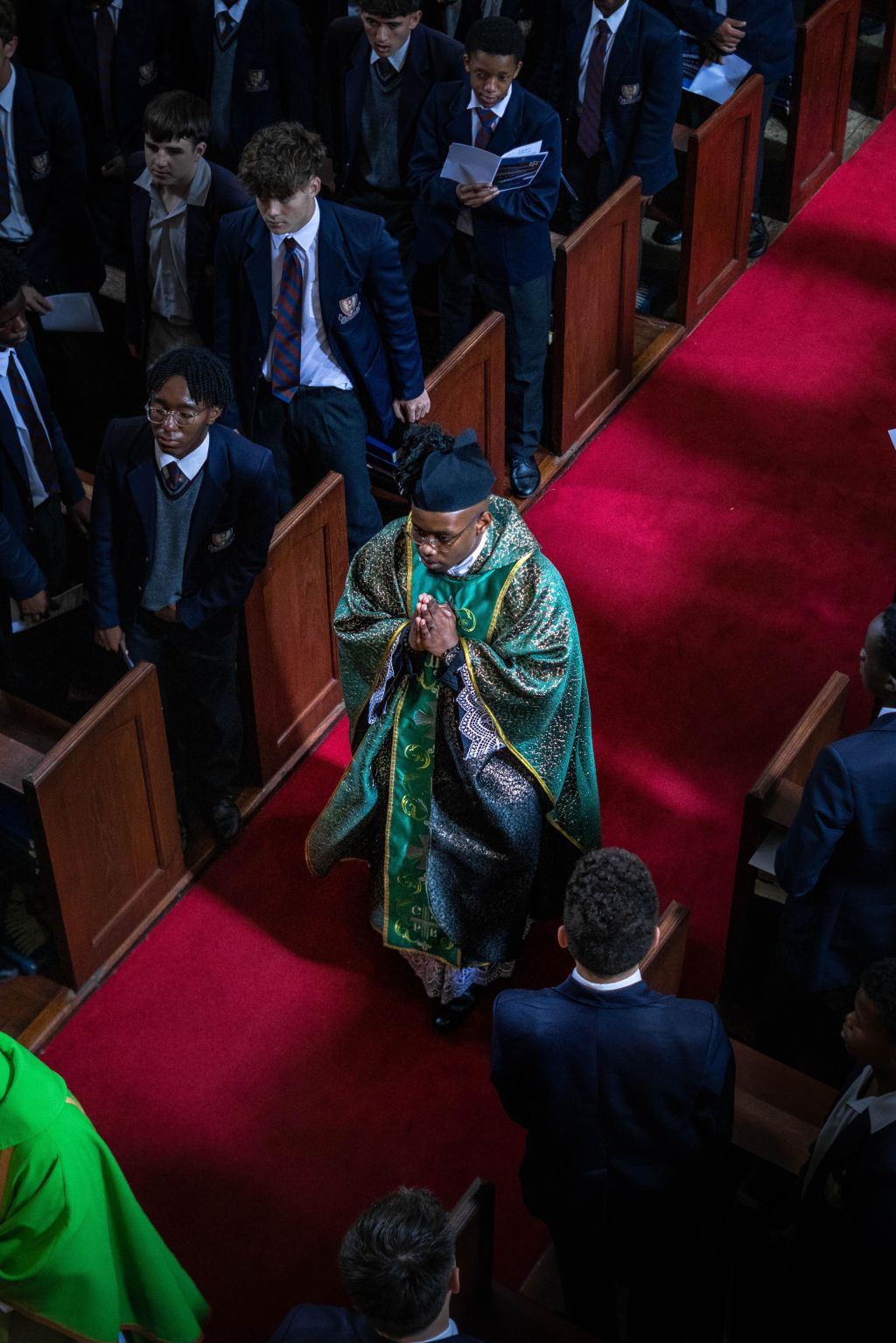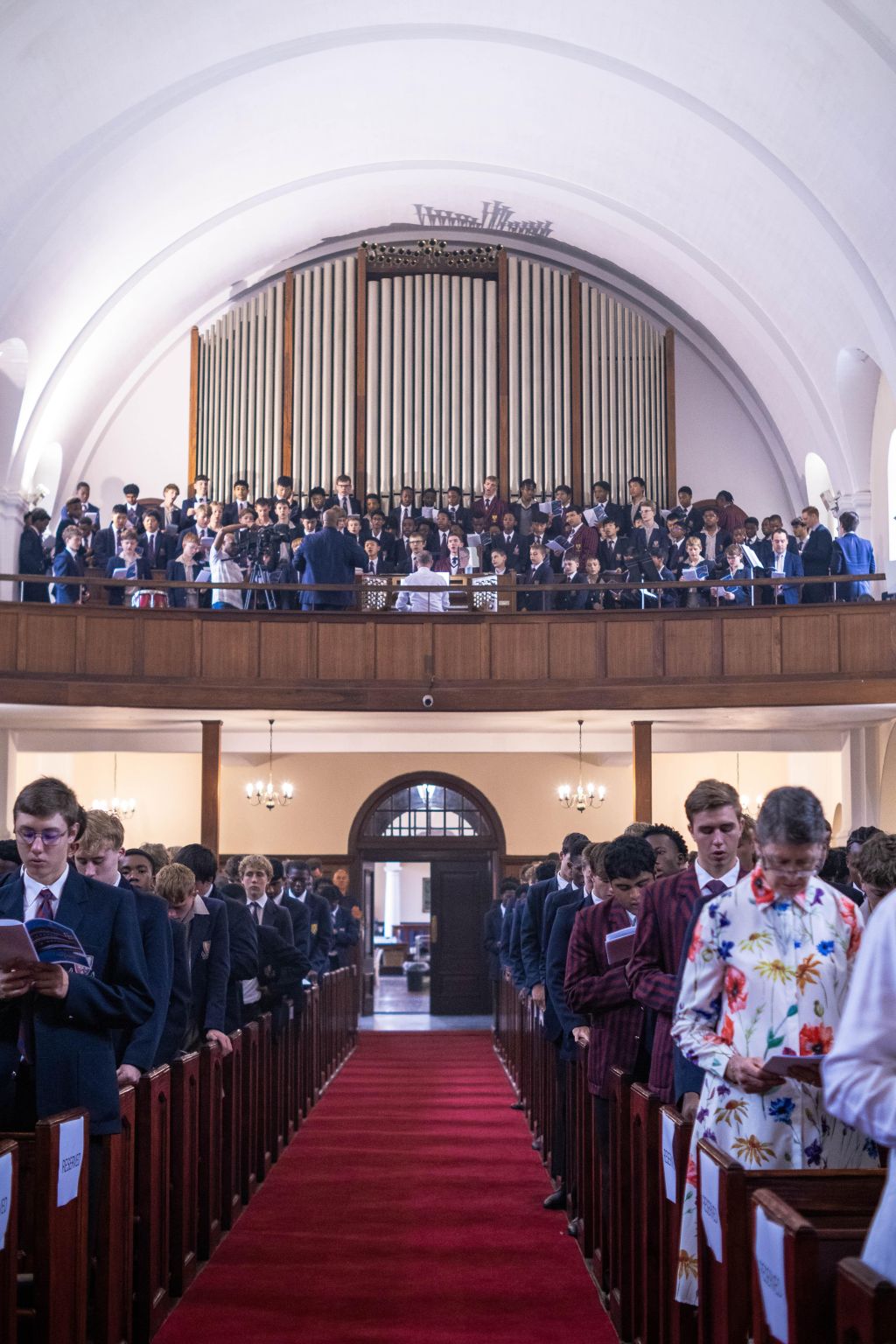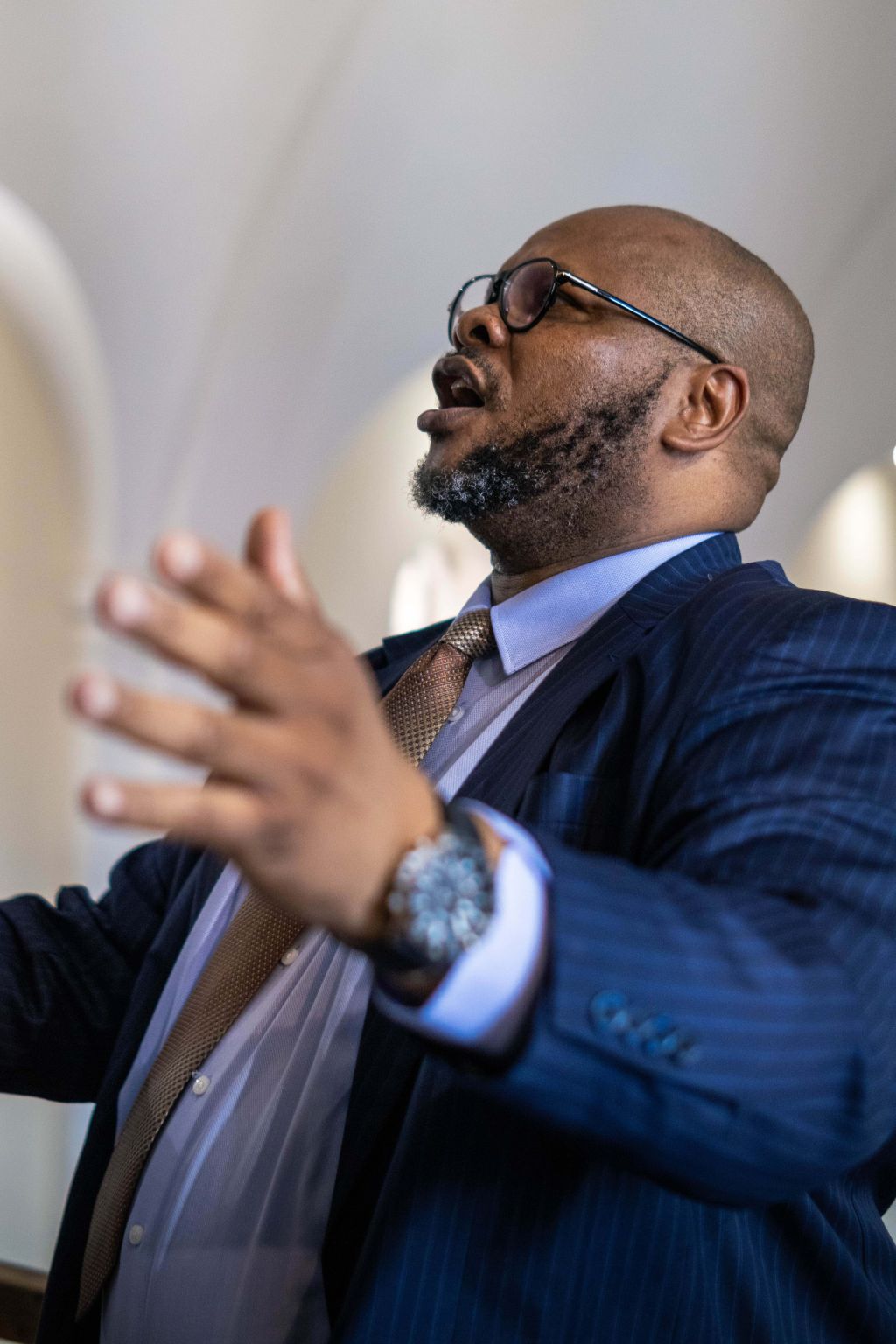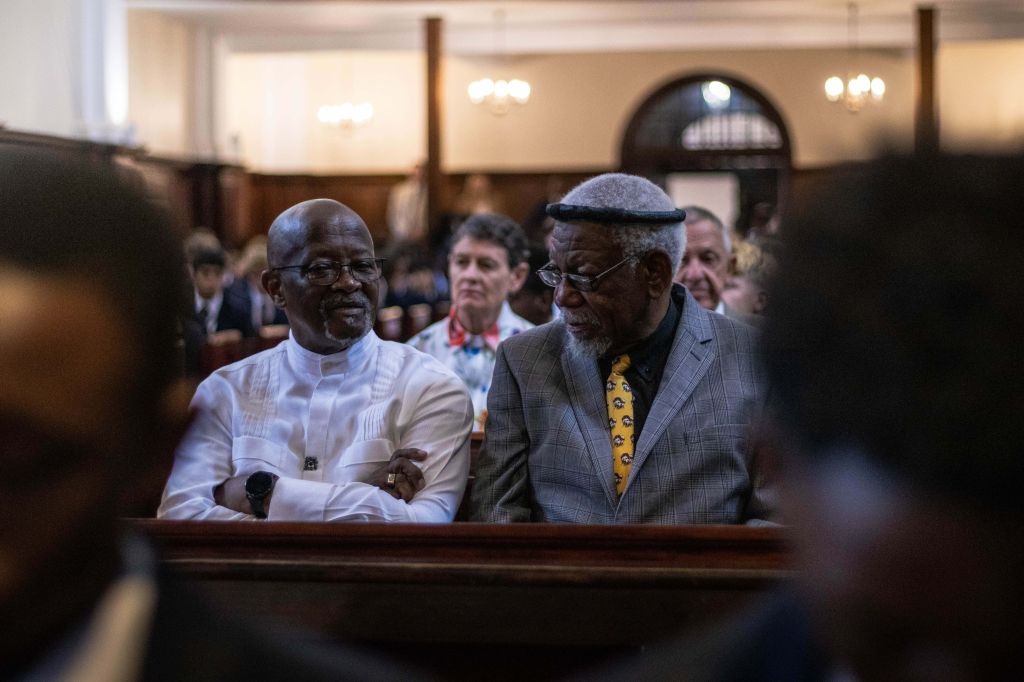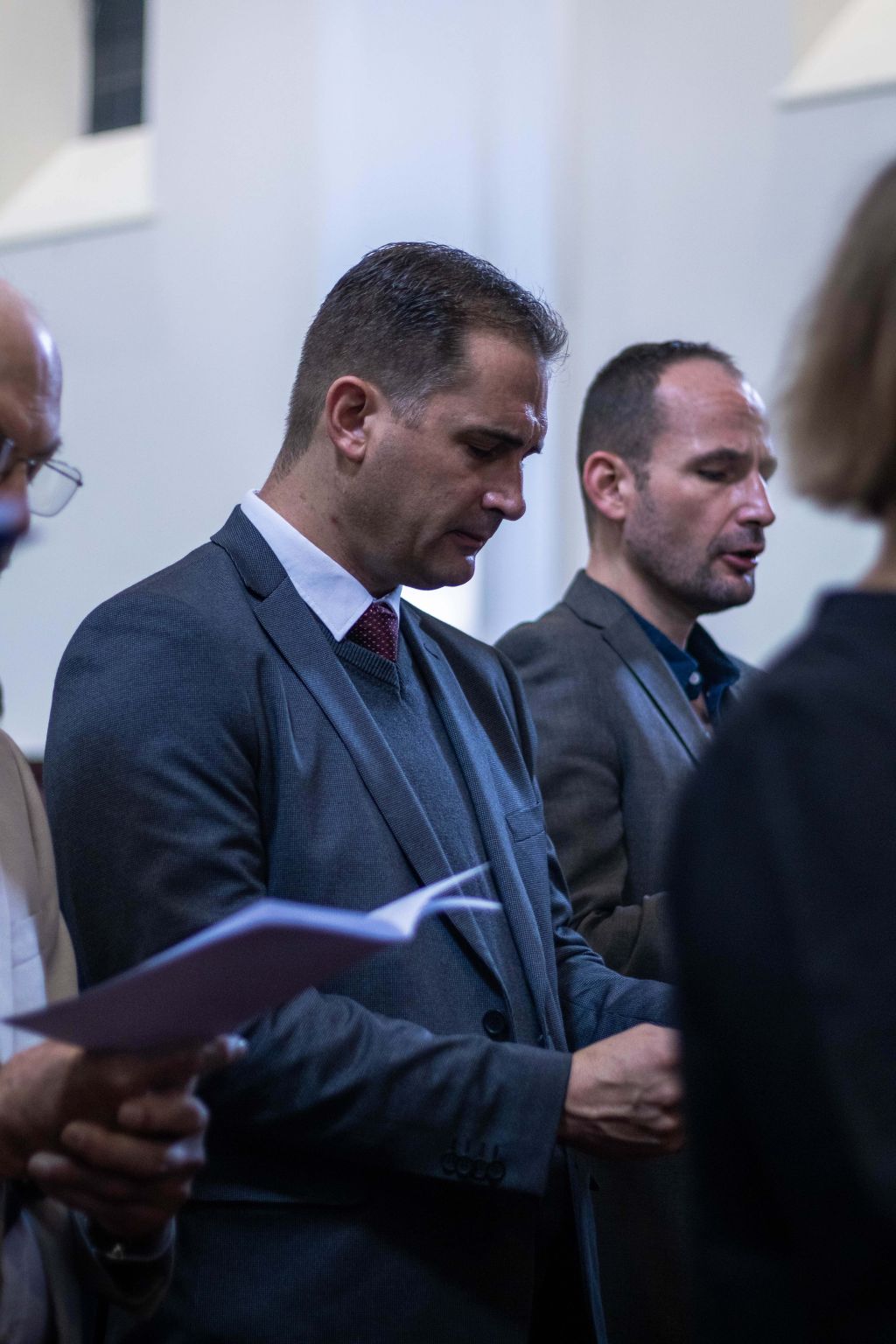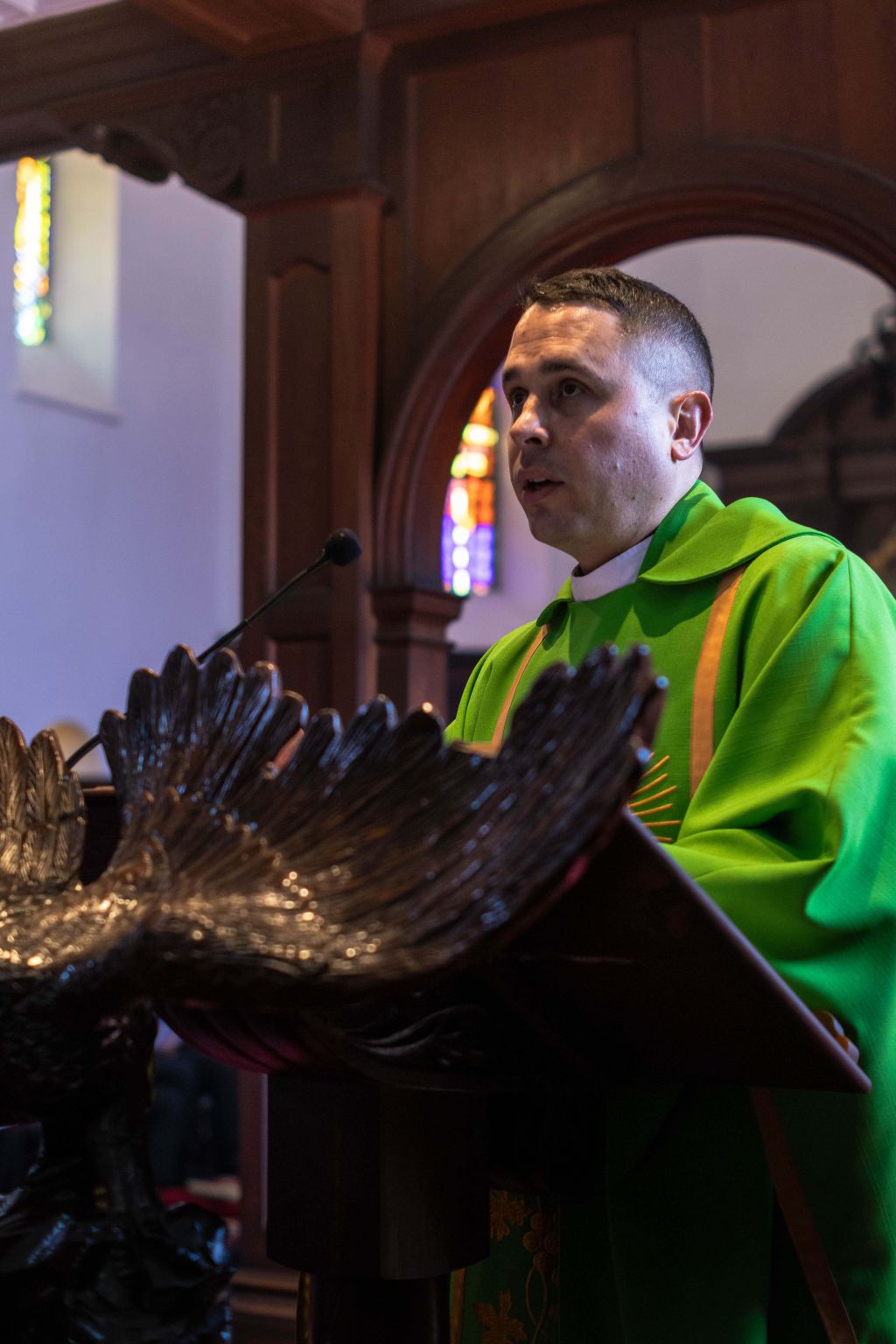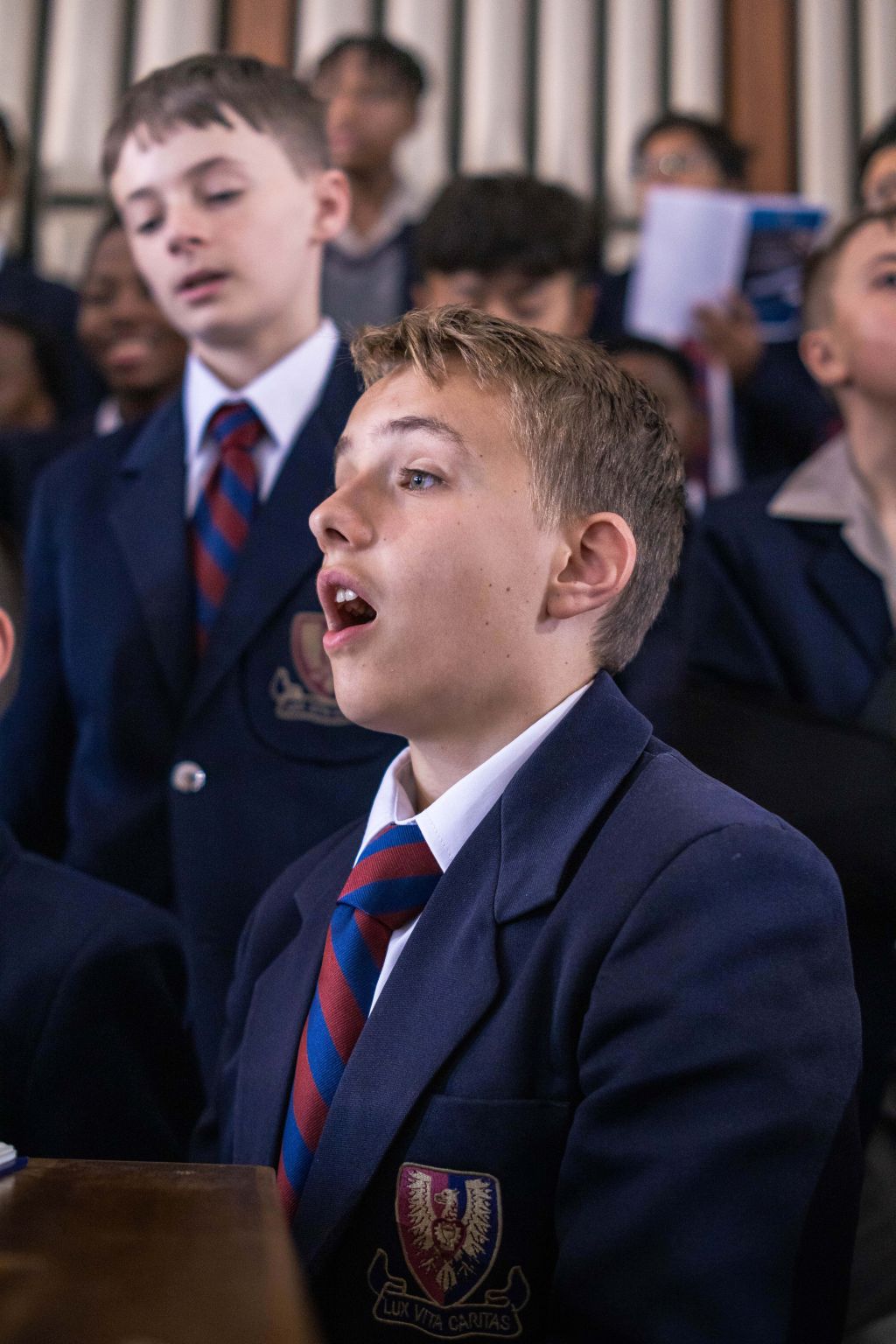St John’s College celebrated the ongoing contribution of liturgical musicians and the legacy of the Noel Iverson Memorial Organ with two significant events.
On Thursday 27 February, a Solemn Eucharist was held during the weekly College Mass to honour the dedication of liturgical musicians. Guests from the city’s choral and organist music community joined this special service, which featured magnificent music and song. The chapel and school quadrangles resonated with glorious harmonies as Mr Cameron Upchurch pulled out all the stops, with voices led by Mr Sidumo Nyamezele and Mr Upchurch filling the air.
In his welcome, Mr Stuart West, Executive Headmaster, quoted from Psalm 145: "Let each generation commend your works to another; let them tell of your mighty acts, and speak of the glorious splendour of your majesty." He continued, "For six decades, this [Noel Iverson] War Memorial Chapel organ has lifted the voices of Johannians heavenward, deepening their experience of the sacred through music that inspires, transforms, and unites. This magnificent organ has been a faithful companion to countless liturgies, enriching the spiritual journey of generations of staff and students, guiding our Venture of Faith through moments of deep joy, reflective worship, and cherished solemnity."
During the Prep School Mass on Friday, 28 February, the organ was re-dedicated, with the full Chapel Choir again performing. This momentous occasion reaffirmed the instrument’s significance as the ‘heart of the Chapel’ in the spiritual and musical life of St John’s College, ensuring its rich sound will continue to inspire generations to come. In his homily, Fr Angus Paterson OJ drew the congregation into an evocative image of the organ, organist, and choir being ‘enveloped by the loving arms of God.’
The Noel Iverson Memorial Organ was originally dedicated on Sunday, 28 February 1965, by the Bishop of Johannesburg in memory of Noel Iverson, the esteemed Director of Music who served the school from 1931 until his passing in 1962. The organ stands as a tribute to his remarkable legacy and contribution to the musical heritage of the College.
A fundraising initiative was launched to commemorate Iverson, resulting in close to R17 000 being raised. In the final weeks of the third term in 1964, the organ was officially handed over by Messrs Cooper, Gill, and Tomkins, the oldest organ-building firm in South Africa, established in 1902. At the time, the College organ was one of the largest in the country. Initially, its use was carefully managed, with performances commencing only after thorough choir and congregation rehearsals. Ten days later, the organ was integrated into weekday services.
The organ, valued then at R23 500, boasts nearly 2 700 pipes and is akin to a full orchestra, featuring stops resembling instruments such as the flute, oboe, trumpet, and piccolo. Of particular note are the Trompeta Real—horizontal trumpets visible outside the casework—and the Schalmei, which produces a sound reminiscent of bagpipes. The organ’s reeds and diapasons are of English origin, while the flutes and strings are German. It comprises four departments: the Great Organ, the Swell Organ, the Choir Organ, and the Pedal Organ, with a programmable memory system for storing stop combinations. Regular maintenance ensures that this treasured instrument remains in pristine condition, supporting Chapel services and performing music from all periods.
Over the decades, many gifted organists have graced the organ gallery, including Jimmy Gordon, Sanet Veldtman, and Gerrit Jordaan, with Cameron Upchurch currently holding the esteemed position. The organ’s melodic notes have long delighted library users and passersby, filling the corridors with beautiful harmonies and the occasional rendition of Bach.
In 1986, during a period of military obligations for the young Ben Oosthuizen, Mr Judge stepped in to play the organ. A challenge arose when Mr Judge underwent surgery, but three students—Mollentz, Illingworth, and Donavan—demonstrated remarkable talent by playing the organ and conducting the choir. Since then, numerous students have honed their skills on this iconic sixty-year-old instrument.
The Memorial Chapel organ even has its own, albeit inactive, Facebook page. Curiously, despite his influential role in music at St John’s, Noel Iverson himself never desired an organ. He believed that a piano sufficed and that the boys’ voices were best heard unaccompanied. Old Johannian James Ridley (Nash 1958/Sixth Form 1959) recalls that Iverson once considered an organ but ultimately decided against it, believing that a high-quality instrument would be too costly, and he refused to compromise on excellence—an ethos aligned with the values of the Clarke era.
So, who was Mr Noel Iverson?
Nicknamed “Stompie” due to his short, compact stature and his fondness for cigarettes, Noel Iverson was a complex and brilliant figure. Renowned for his musical genius and rigorous discipline, he directed both the choir and Gilbert and Sullivan productions with exacting standards. Despite his sharp wit, he was known for his compassion and dedication to students as the Hill Housemaster and cricket coach. In 1955, Iverson introduced a tradition of Old Johannian Choir participation at the Gaudy Day sung Eucharist—a cherished tradition that continues to this day.
The Noel Iverson Memorial Organ stands as a testament to his vision, enriching the musical and spiritual life at St John’s College. As the Memorial Chapel resounds with its majestic tones, Iverson’s legacy endures, inspiring generations of Johannians to appreciate the power of music.

